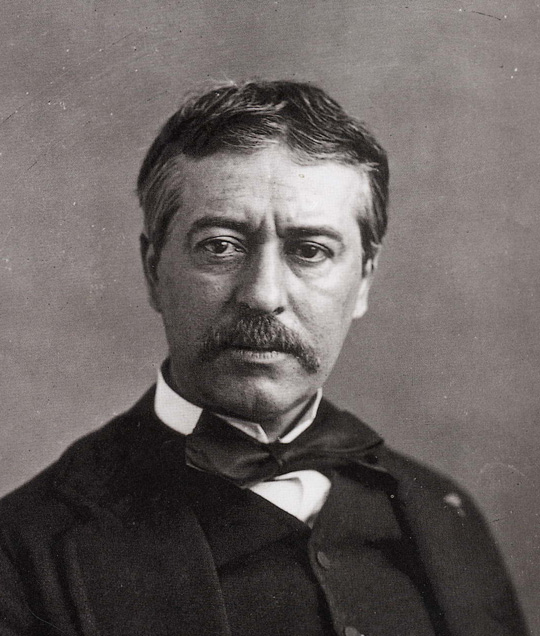From the New York Courier and Enquirer
14 november 1846
THE ISLAND OF ST. PIERRE AND MIQUELON.
Of these two small islands,’ which belong to our continent, and which have been much talked of, and written about, in times past, In: of which the very existence and position are now comparatively unknown, the Courier de Etats Unis lakes occasion apropos of the arrival in our harbor of a French vessel of war under the command of Capt. Ledret, governor of St. Pierre,—to give this notice:
‘‘The islands of St. Pierre and Miquelon are the last remnants of the once extensive empire of France in North America. They are situated about five leagues to the southward of Newfoundland, arc almost unknown and yet they constitute the centre, as it were, of our greatest maritime enterprise. The Cod-fishery employs annually 400 French vessels, manned by 12,000 sailors, and it is at St. Pierre that they put in to recruit and refresh,— to dry their fish, and at times seek refuge in the spacious harbor of that island against the tempests and icebergs of the ocean.
« The history of the little Archipelago is fertile, as that of more extended regions, in the vicissitudes of greatness an J decay. Newfoundland, as is known, was discovered und named by Verazani on his return from taking. possession of Canada under Francis 1, in the year 1525. Alter the death of the great navigator, who, like Captain Cook, was assassinated by the savages, Jacques Cat-tier, a Breton from St. Malo, established himself in Newfoundland with a French colony, and visited St. Pierre and Miquelon. The cod- fishery was immediately entered upon on a grand scale and became very flourishing in the reigns of Henri IV. and Louis XIV., who encouraged shippers by laws and bounties of magnificent protection. But in the apogee of the reign of the great King, France was too rich in colonies to pay much attention to the islets of which we are now speaking. We possessed Canada, Louisiana, Nova, Scotia: of what importance lo us was St. Pierre? In 1713, the treaty of Utrecht yielded Nova Scotia and Newfoundland to the English.— We had an equivalent in the preponderance of France at the Court of Spain. The Pyrenees had disappeared. In 1763 the treaty of Paris look from us Canada, without any equivalent; and Louisiana was about the same time sold to the King of Spain; so that there only remained to France in all North America hut the little isles of St. Pierre and Miquelon. Many the inhabitants of Newfoundland and Nova Scotia, took refuge in these islands to avoid the domination of England. J3ut even in the extreme corner of the globe, their patriotism was to be subjected lo new trials. The English in 1778 rendered themselves masters of the islands and destroyed all our establishments: the inhabitants to the number of 1200 returned to France. Peace restored the colony to us, and the old settlers went back. In 1793 the isles were again taken, and again the inhabitants emigrated. France which was then conquering continental Europe, was less fortunate by sea. Finally at the Restoration, the archipelago was restored to us, and an expedition fitted out by the government carried back thither whatever remained in France of the former settlers. This unfortunate population, tossed from one hemisphere to the other by successive revolutions, returned to their desert rocks there to keep up their perpetual struggle against the rigors of poverty, the climate and the elements.
The island of St. Pierre only four leagues in circumference, is barren and mountainous. Miquelon, separated from it by some miles of area, is fifteen leagues in circumference, fertile is pasturage, crowned with wood and has several well cultivated farms. She supplies her neighbor, but St. Pierre is the scat of government by reason of the vast and beautiful harbor with which Nature has endowed the island. We own besides the island Langlade larger than St. Pierre, and four other islands, wither animals are sent for pasturage. St. Pierre has a pretty town, with its priest, its notary, its municipal council and the brigade of gendarmes, in short a miniature of France at fifteen hundred leagues from the mother country. Its population numbering about two thousand is wholly employed in the fisheries during the six months of winter is altogether shut up within itself. But in summer, vessels from all Nations visit this little port and the town has a most animated appearance, the sailors weary of long voyages indemnify themselves by dancing and singing and interminable libations which disturb for some months the peaceful repose of the town.
Another and very different scene is witnessed almost every year, which goes hack to a period when all the Canadians were subjects of France. It is known how much the Indian tribes always sympathized with the French, whose religion moreover they embraced. The Micmacs formely dwelt in Nova Scotia. Now the Christian portion of them have taken refuge in Newfoundland.— This expatriated tribe still strives to mingle their mental remains with those of their white compatriots; and accordingly on the return of spring a flotilla of bark canoes is seen approaching St. Pierre. It is the pilgrimage of the red skins, bringing them their dead and their newly born. The inhabitants extend to them the best hospitality, and Indians and fishermen mingle in a common procession to the church. The children are baptized, the dead are laid in consecrated ground, and a modest cross is raised over the spacious grave. Thus the must powerful ties of faith and charily, unite in our days the descendants of the aborigines of Nova Scotia, and those of its early colonists.
